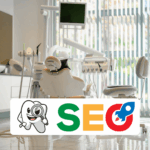In digital commerce, your website represents your brand to customers. In some cases, it is the only representation of your brand. The design and functionality of your website can either attract potential customers to your brand or drive them away. Therefore, the investment in web design is to generate revenue. Customer retention greatly depends on the website. A reputable ecommerce website design company recognizes this equilibrium and has the skills to convert website visitors into customers.
First Impressions Shape Buying Decisions
Once potential customers arrive on your website, they have a finite amount of time to evaluate your site. In this situation, each second is critical.
Research has demonstrated that a professionally designed site enhances credibility. A well-designed site with cohesive color, structured layout, legible fonts, and strong images conveys professionalism, building credibility and trust with potential customers. It also stimulates impulse purchasing.
Customers who trust your site gain the confidence to click through, examine your offerings, and complete a purchase.
A Better User Experience Means More Conversions
User experience (UX) is an essential, albeit invisible, component of every successful ecommerce business. Good design ensures that customers navigate a site and find what they need easily, without having to ‘think’ to get the products and information they seek.
Consider a hypothetical shopper who goes to your site to buy a particular item. They will likely leave your site altogether if your menus are confusing or your filters are ineffective. Conversely, if the layout is intuitive, categories are clearly organized, and the filters or search functions work as intended, the shopper will likely stay longer, exploring even more.
Good design thinks through the user’s journey and minimizes frustration or confusion.
The Power of Mobile Optimization
With more than half of all online smartphone purchases, failing to optimize your mobile ecommerce site means potentially losing significant revenue.
Designers work to ensure that your site works on all devices and automatically responds to various screen sizes, whether desktops, tablets, or smartphones.
Responsive designs, touch-activated buttons, and mobile-compatible menus ensure uninterrupted convenience.
Using optimized mobile websites will reduce abandonments, especially during checkout. No shopper is likely to leave a payment screen that is accessible as they are completing a transaction.
In conclusion, excellent mobile interfaces will improve sales.
Speed: The Silent Sales Driver
The beauty of an online store is of little use when potential customers are waiting for pages to load. Speed determines if sales will be made, especially in ecommerce.
Research shows that you can lose up to 7% of your potential customers for every extra second your page loads. The developers of your ecommerce site will improve loading speeds and overall performance by optimizing images, streamlining code and selecting an ecommerce hosting that will improve site origin load speeds.
Higher speeds will capture customers for a longer time, leading to purchases. Speed is a robust and straightforward design element for increasing sales.
Smart, Strategic Calls-to-Action (CTAs)
In design, forms of attention capture are as important as the beauty of a site. Effective calls to action are one of the best forms of attention capture.
At specific points of the buyer’s journey, strategically positioned buttons increase the likelihood of a click without being pushy.
Effective usability leads to increase in conversion rates. This also applies to the design of the CTAs: The clearer and visually attractive they are, the more the chances of conversions increase.
More Completed Sales are a Result of Streamlined Checkouts
Cart abandonment is a design failure, and one of the biggest challenges in ecommerce.
An optimized checkout page minimizes unnecessary steps. It offers guest checkout options, supports multiple payment methods, and clearly displays shipping details and costs. The more frictionless the process, the fewer carts are abandoned.
A professional design instills the perception of simplicity and security, which is what customers need to complete a purchase confidently.
Trust and Credibility Through Design
The absence or presence of every visual component on a website contributes to a brand’s credibility. Customer reviews, security badges, and clear return policies, along with accessible contact details, are visual elements to build trust. A well-designed ecommerce site interlaces trustworthiness throughout the site so seamlessly that it would be hard to notice it. It should be clearly showcased where customers expect trust.
Specialized designers understand how to use quality images, zoom capabilities, and uncluttered layouts to showcase each item optimally.
Shoppers need detailed descriptions, color variations, and customer-uploaded images to help them picture the product before purchasing. Providing more informative and clear detailed visuals will reduce the likelihood of a customer returning a product.
Effective design does not simply exhibit your merchandise; it actively promotes and sells it.
The SEO Advantage in Site Layout
Search engine optimization, or SEO, involves more than just using pertinent keywords; it also concentrates on how your website is structured. Well-designed websites utilize clean coding, sensible organizational architecture, and rapid loading times, allowing search engines to sift through and index the site more efficiently.
When your ecommerce site ranks more highly in search results, you generate more unpaid traffic, which converts at a better rate than paid advertising.
Therefore, it is accurate to say that layout and SQL’s ‘more SEO’ work harmoniously to enhance profitability.
Common Inquiries Regarding Professional Ecommerce Site Design
Q: Why can’t I simply use a pre-designed template?
While a template may appear attractive, they do not align precisely with your brand and end-user experience. Custom design allows ensuring that the site does not just work visually, but also in a strategically planned manner.
Q: How long does it take to design a professional ecommerce site?
This question has no definitive answer because ecommerce sites vary significantly in size and complexity. However, a reasonable generalization is that the majority take anywhere from a few weeks to a few months. Remembering that quality design pays for itself, particularly in site performance and conversion optimization, is important.
Q: Is it expensive to hire professionals?
This is all about the return on investment. You can expect a professionally designed site to pay for itself fairly quickly due to conversions, bounce rate, and SEO visibility improvements.
Q: How often should I redesign my ecommerce site?
Every ecommerce site should be redesigned every two to three years. You should also consider redesigning when user data reveals a downward trend in engagement or conversion. This is important because technology and consumer user expectations evolve quickly.
Q: Can professional design really improve SEO rankings?
Without a doubt. There are the obvious aspects of design such as responsiveness, loading speed, and overall user experience. An effective and professionally designed site will encompass all of these aspects and therefore improve performance in SEO.
Design That Sells – Not Just Looks Good
The professional design of a website or site elements is about strategy, psychology, and technology harmonizing to drive sales. It is important to remember that each color, button, or font choice is an integral part of the user experience. When engaging with a professional ecommerce website design company, a well-designed website is a secondary benefit; you receive a trust-building, revenue-generating, usability-enhancing system.
Because in the end, your website shouldn’t just showcase your products — it should sell them.






